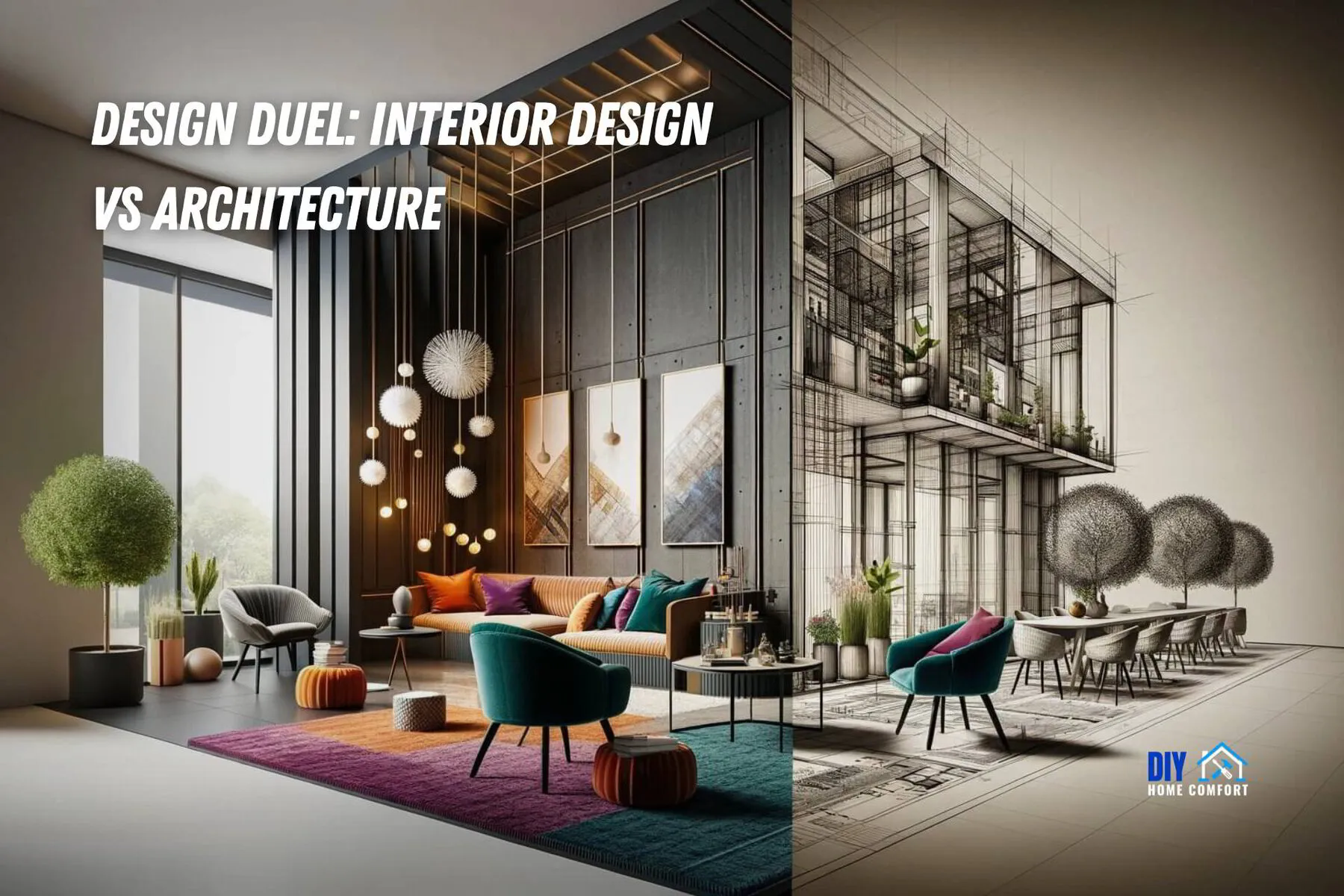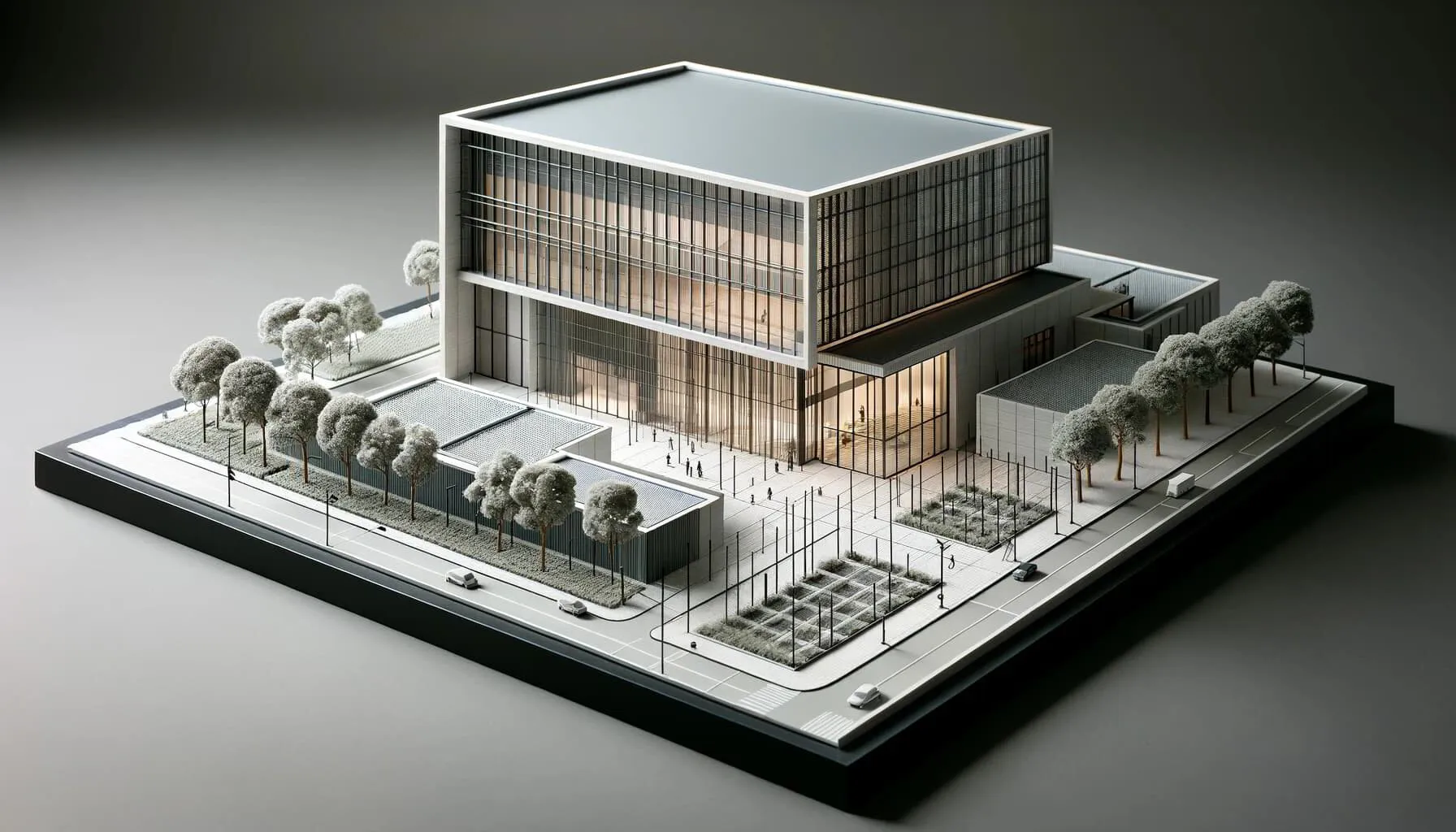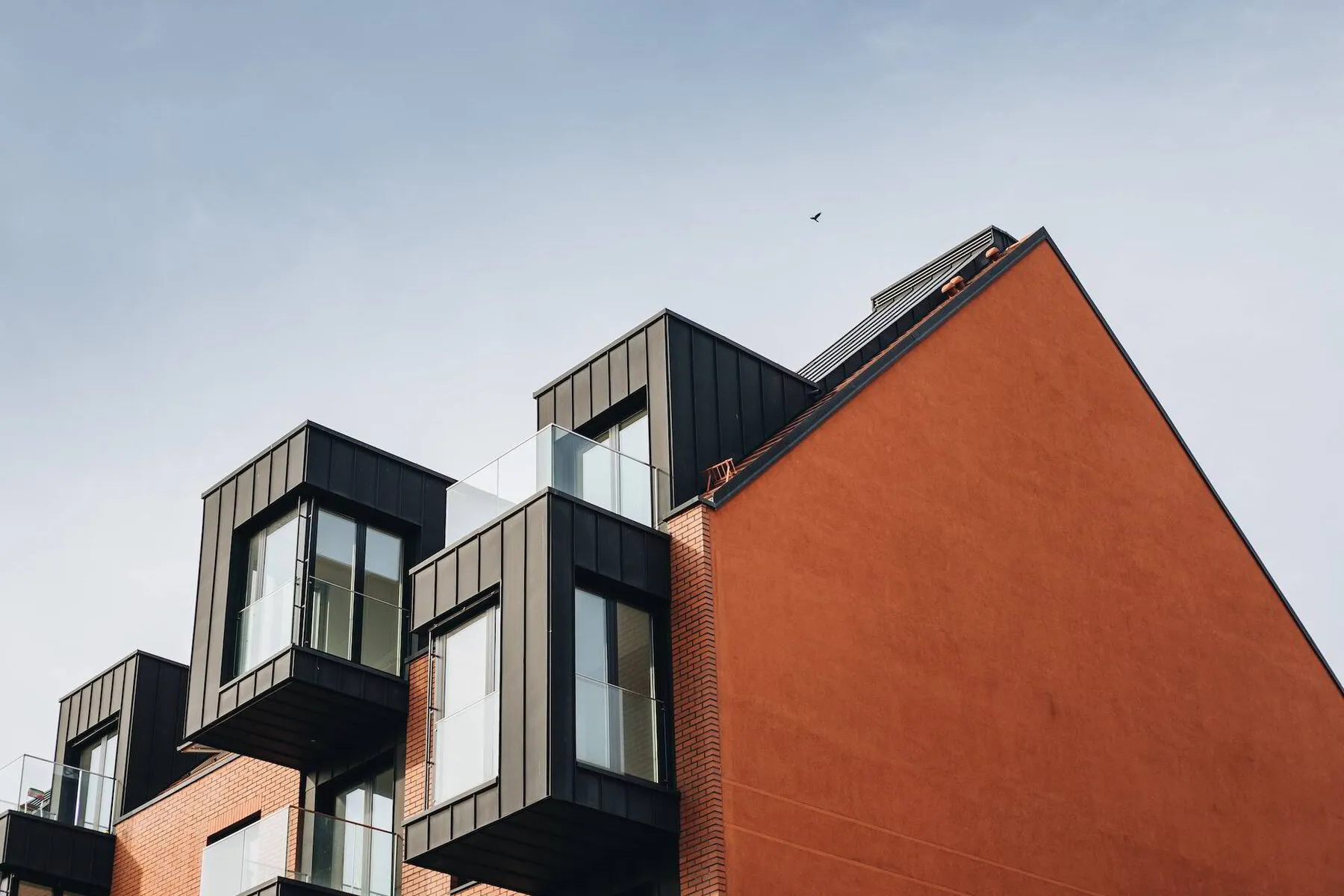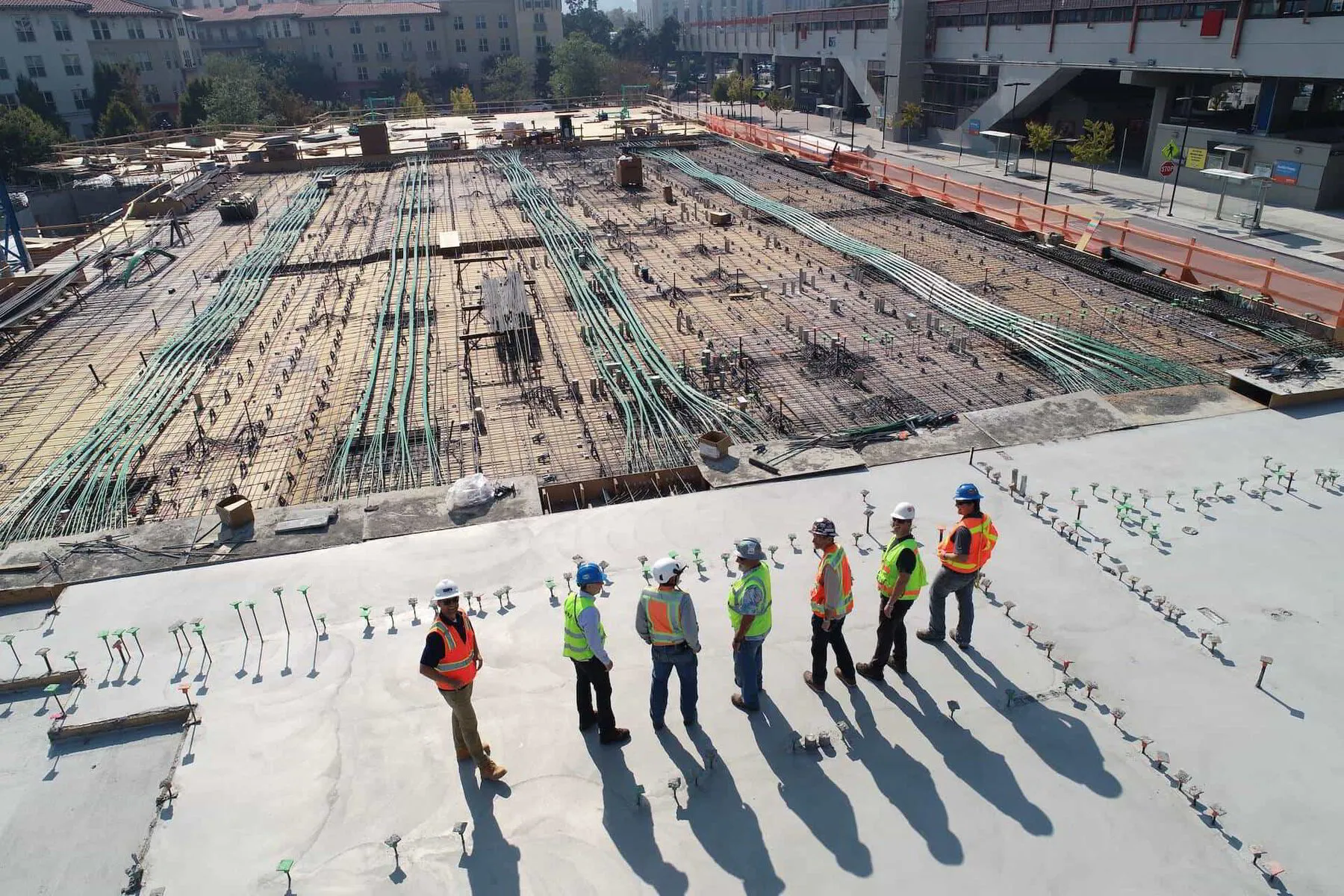Interior design and architecture both play a crucial role in shaping our built environment.
However, despite their overlapping nature, there are fundamental differences between the two professions.
Understanding these differences is essential for anyone considering a career in either field or planning to hire a designer or architect for their project.
This article will explore the differences between interior design and architecture, their similarities, and career opportunities in each field.
📘 Key Takeaways
- Diverse Domains: While interior design and architecture involve designing spaces, their focal points differ, with interior design prioritizing the aesthetics and health of internal environments and architecture focusing on the structural planning of buildings.
- Educational Paths: An interior designer generally holds a bachelor's degree in interior design with a choice to specialize in residential or commercial design, whereas an architect requires a professional degree in architecture and must pass a licensing exam.
- Distinct Roles: Interior designers work closely with clients to create aesthetically pleasing and functional spaces while architects create safe, practical, and visually appealing structures.
- Collaborative Efforts: The collaboration between interior designers and architects is crucial in producing functional and visually captivating spaces.
- Aesthetics and Functionality: Both professions require a keen eye for aesthetics and functionality, ensuring spaces not only look good but work well, too.
What is Interior Design?
Interior design is the art and science of enhancing the interior of a space to achieve a healthier and more aesthetically pleasing environment for the people using the space.
Interior designers work with clients to create functional and beautiful spaces that meet their specific needs and preferences.
Interior design involves more than just selecting furniture and decor.
It includes space planning, lighting design, color coordination, and material selection.
Interior designers must have a strong understanding of design principles, building codes, and safety standards.
Interior designers can specialize in residential or commercial design.
Residential designers focus on designing living spaces such as homes, apartments, and condos.
Commercial designers work on designing spaces within commercial buildings such as offices, restaurants, and retail stores.
Interior design can have a significant impact on our well-being.
A well-designed space can improve mood, reduce stress, and increase productivity.
Interior designers play a crucial role in creating interior spaces that are beautiful, functional, and beneficial to our health.
📘 Related Reading: Commercial Interior Design Guide for New Designers
What is Architecture?
Architecture is the art and science of designing and planning buildings and other structures.
Architects are responsible for creating safe, functional, and aesthetically pleasing structures that meet the needs of their clients.
They must consider safety, accessibility, environmental impact, and building codes when designing structures.
Architects work on every stage of the building process, from creating the initial design to overseeing the construction process.
They work closely with clients to understand their needs and preferences and create designs that meet their requirements.
Architects can specialize in different types of buildings, such as residential, commercial, or industrial.
They must have a strong understanding of design principles, engineering, and construction methods.
Architecture has a significant impact on our daily lives.
The buildings and structures we inhabit affect our mood, productivity, and overall well-being.
Architects play a crucial role in constructing buildings that are not only functional but also visually appealing and beneficial to our health.
Interior design and architecture are two closely related fields that involve designing and planning spaces and structures.
While they have distinct differences, they both play a crucial role in creating functional, aesthetically pleasing environments and are beneficial to our health and well-being.
Key Differences Between Interior Design and Architecture
Interior design and interior architecture are closely related disciplines that are often confused.
While they share some similarities, there are also significant differences.
This article will explore the key differences between architecture vs interior design and architecture.
Scope of Work
The primary difference between interior design and architecture is their scope of work.
Interior designers focus on the interior spaces of buildings, including lighting, furniture, and color schemes.
They work closely with clients to create functional and aesthetically pleasing spaces that meet their needs and preferences.
On the other hand, architects design the entire building, including the exterior and interior spaces.
They are responsible for ensuring the building is structurally sound, safe, and meets all applicable codes and regulations.
While interior designers and architects work on the design of buildings, their focus is different.
Interior designers are concerned with the human experience of the space, while architects are more concerned with the technical aspects of the building.
Education and Licensing Requirements
Interior designers typically have a bachelor's degree in interior design or a related field and may be required to obtain a license in some states.
In addition to formal education, they often complete internships or apprenticeships to gain practical experience.
Architects must have a professional degree in architecture, followed by a three-year internship, and pass a licensing exam.
They must also complete continuing education courses to maintain their license.
While interior designers and architects require formal education and training, the requirements for becoming an architect are generally more rigorous.
This is because architects are responsible for building safety and structural integrity, which requires a high level of technical expertise.
Design Approach and Focus
Interior design and architecture differ in their design approach and focus.
Interior designers typically focus on the aesthetics and functionality of the space.
They work closely with clients to understand their needs and preferences and create a design that meets those needs while also being visually appealing.
They may also consider factors such as lighting, acoustics, and ergonomics when interior designing a space.
Architects, on the other hand, design buildings that meet specific requirements, such as accessibility, sustainability, and safety.
They are responsible for ensuring the building is structurally sound and can withstand natural disasters such as earthquakes and hurricanes.
When designing a building, they also consider factors such as energy efficiency, ventilation, and natural light.
While both interior designers and architects are concerned with the design of buildings, their focus is different.
Interior designers are concerned with the human experience of the space, while interior architects are more concerned with the technical aspects of the building.
However, both disciplines are essential in creating functional and aesthetically pleasing indoor spaces.
The Role of Interior Designers and Architects in a Project
When you walk into a beautifully designed space, have you ever wondered who was responsible for creating it?
Chances are, it was a collaborative effort between an interior designer and an interior architect.
These two professions work together to create spaces that are not only functional but also aesthetically pleasing.
Collaboration Between Interior Designers and Architects
Interior designers and architects often work together on large-scale commercial projects.
Interior designers focus on the interior design elements, such as furniture, lighting, and color schemes, while architects design the overall building structure.
The two professions collaborate to ensure that the function and aesthetic aspects of the space are balanced.
Interior designers and architects work closely during the design process to ensure that the space meets the client's needs and vision.
They consider factors such as the building's location, the purpose of the space, and the client's budget.
Communication is crucial in this process, and the two professions must work together effectively to ensure the project is completed successfully.
Collaboration between interior designers and architects doesn't stop at the design phase.
During the construction phase, they continue to work together to ensure the project is executed according to plan.
They make site visits, attend meetings with contractors, and make adjustments as necessary.
When to Hire an Interior Designer vs. an Architect
When considering whether to hire an interior designer or an architect, it's essential to consider the project's scope.
If the project involves only interior space design, such as a kitchen remodel or a bathroom renovation, an interior designer is the best option.
Interior designers are experts in creating functional and beautiful spaces that reflect the client's personality and style.
If the project includes structural changes or building design, such as adding an addition to a home or building a new commercial space, an architect is necessary.
Architects are licensed professionals who are trained in building design and construction.
They are experts in creating spaces that are not only beautiful but also safe and structurally sound.
However, interior designers and architects are needed for large-scale projects to ensure the project's success.
By working together, they can create spaces that are functional, beautiful, safe, and structurally sound.
Collaboration between interior designers and architects is essential in creating functional and aesthetically pleasing spaces.
They work together to ensure that the space meets the client's needs and vision, and they continue to work together during the construction phase to ensure that the project is executed according to plan.
Whether considering a small renovation or a large-scale commercial project, hiring an interior designer and an architect is key to ensuring your project's success.
The Importance of Aesthetics and Functionality
The importance of aesthetics and functionality is common in interior design and architecture.
Both professions aim to create spaces that are not only aesthetically pleasing but also functional, safe, and efficient.
Both professionals consider factors that interior designers design, such as ergonomics, lighting, and acoustics, when designing spaces.
For example, in architecture, the placement of windows and the orientation of the building are carefully considered to maximize natural light and reduce energy consumption.
Similarly, in interior design, lighting is used strategically to enhance the mood and functionality of a space.
Both professions also consider the occupants' safety by ensuring that the space is accessible and free from hazards.
The Use of Design Principles and Elements
Interior designers and interior architects both use design principles and elements to create beautiful and functional spaces.
Both professions consider factors such as balance, harmony, proportion, and texture when designing spaces.
They also use similar design software and tools, such as AutoCAD, SketchUp, and Revit.
For example, in architecture, the use of proportion is essential in creating a visually appealing structure.
The size and scale of the building must be carefully considered to ensure that it fits within the surrounding environment.
Similarly, texture can add depth and interest to a space in interior design.
Choosing materials like wood, stone, or metal can create a tactile experience that enhances the overall design.
Both professions must also consider the principles of sustainability and environmental impact when interior designing spaces.
Architects and interior designers increasingly incorporate green building practices, such as using renewable energy sources and environmentally friendly building materials.
The Collaborative Nature of Both Professions
Another similarity between interior design and architecture is the collaborative nature of both professions.
Both professionals work closely with other experts, such as engineers, contractors, and project managers, to ensure the design is executed correctly.
Collaboration is essential in ensuring that the space is beautiful and functional and meets the client's needs.
For example, in architecture, the engineer may work closely with the architect to ensure the building is structurally sound and meets building codes.
Similarly, in interior design, the contractor may work closely with the interior designer to ensure the plan is executed correctly and within budget.
In conclusion, while there are differences between interior design and architecture, such as the scale and scope of the projects, there are also many similarities.
Both professions aim to create beautiful, functional, and safe spaces, and both use similar design principles and elements to achieve this goal.
Additionally, both professions require collaboration with other experts to ensure that the whole design process is executed properly.
Career Opportunities in Interior Design and Architecture
Interior design and architecture are two exciting and constantly evolving fields offering many career opportunities.
Both fields require creativity, attention to detail, and a passion for design.
If you have a natural talent for spatial awareness, color coordination, and aesthetics, a career in interior design or architecture may be the perfect fit for you.
Job Prospects for Interior Designers
The job outlook for interior designers is promising, with a projected 4% increase in employment opportunities from 2019 to 2029.
Interior designers can work in various industries, including architecture, engineering, design firms, furniture stores, or self-employment.
Interior designers play a crucial role in creating functional and aesthetically pleasing spaces.
They work closely with clients to understand their needs, preferences, and budget.
They then use their expertise to select colors, materials, furniture, and accessories to enhance the space and create a cohesive design.
Interior designers also need to have strong communication and project management skills.
They must be able to work collaboratively with architects, contractors, and other professionals to ensure that the design meets the client's needs and is completed on time and within budget.
Job Prospects for Architects
The job outlook for architects is also positive, with a projected 1% increase in employment opportunities from 2019 to 2029.
Architects can work in various settings, including architecture firms, engineering firms, construction companies, or self-employment.
Architects are responsible for designing and planning buildings and other structures.
They work closely with clients to understand their needs and create a design that meets their requirements.
Architects must also consider factors such as safety, accessibility, and environmental impact when designing a building.
Architects use various tools and technologies to create their designs, including computer-aided design (CAD) software, 3D modeling software, and building information modeling (BIM) software.
They must also have strong communication and project management skills to work effectively with clients, contractors, and other professionals.
Overall, both interior design and architecture offer exciting and fulfilling career opportunities for those with a passion for design and a desire to create functional and beautiful spaces that enhance people's lives.
📘 Looking for work as an architect abroad? Check out Jooble!
Final Thoughts on Architecture and Interior Design
Interior design and architecture differ in their scope of work, education and licensing requirements, and design approach.
However, both professions require a keen eye for aesthetics and functionality to create beautiful and functional spaces.
Understanding the differences and similarities between the two professions is crucial for anyone considering a career in interior design or architecture or planning a building or renovation project.
If you want to explore interior design more, check out the rest of our blog for a more detailed look!
📘 Related Reading: The Ultimate Glossary of Interior Design Terms
Lara Harding
Lara is a supporting author @ DIY Home Comfort. She's an experienced interior designer and decorator and a full-time mom. You can find out more about her here.







